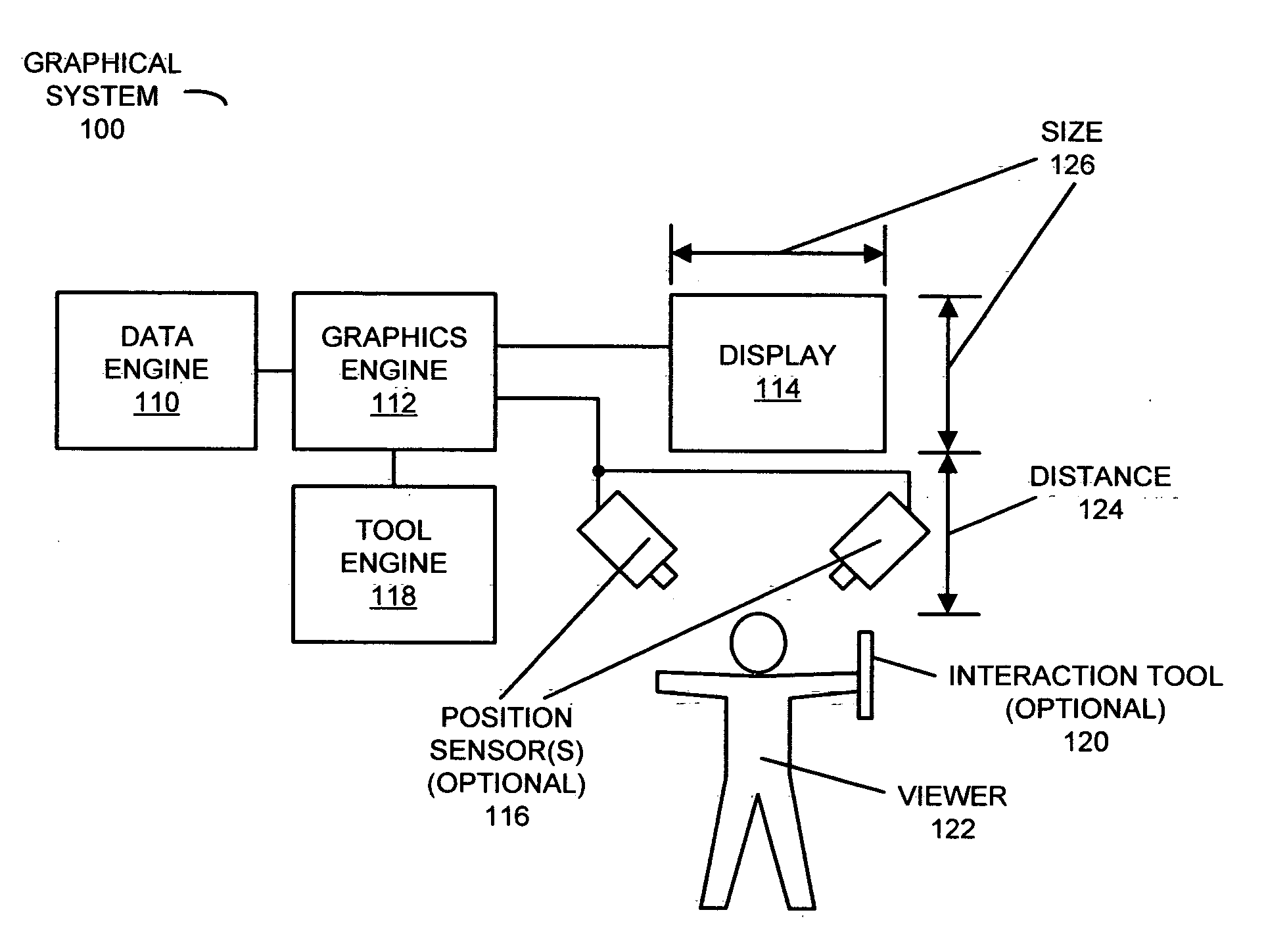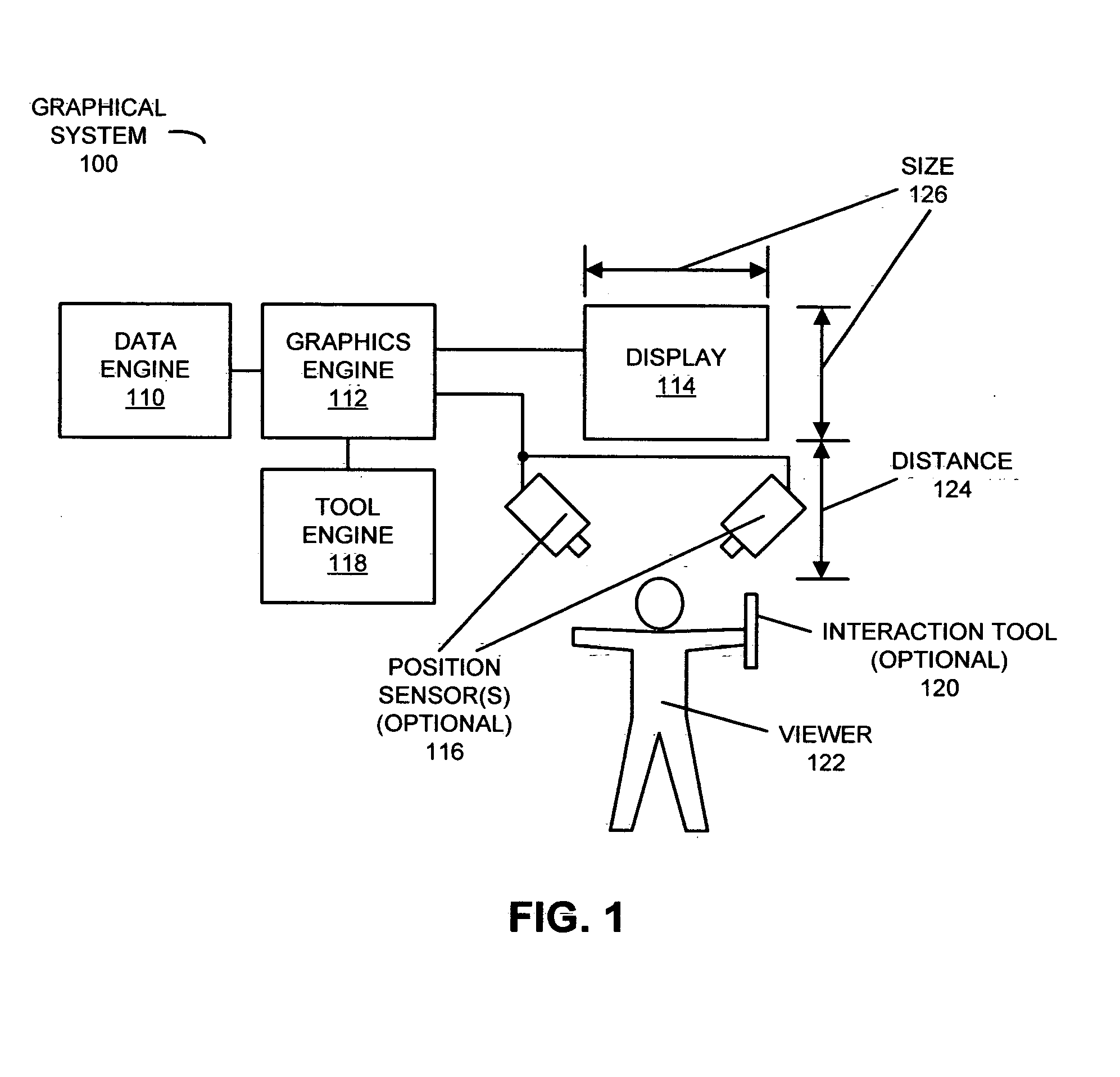Graphical system with enhanced stereopsis
a stereopsis and graphical system technology, applied in the field of three-dimensional information presentation techniques, can solve the problems of affecting the user's experience, affecting the accuracy of the viewer's image, and unable to accurately present three-dimensional (3d) information to the user using 2d images, so as to facilitate user interaction
- Summary
- Abstract
- Description
- Claims
- Application Information
AI Technical Summary
Benefits of technology
Problems solved by technology
Method used
Image
Examples
Embodiment Construction
[0044]Human perception of information about the surrounding environment contained in visible light (which is sometimes referred to as ‘eyesight,’ sight,′ or ‘vision’) is facilitated by multiple physiological components in the human visual system, including senses that provide sensory inputs and the cognitive interpretation of the sensory inputs by the brain. The graphical system in the present application provides rendered images that intuitively facilitate accurate human perception of 3-dimensional (3D) visual information (i.e., the awareness of an object or a scene through physical sensation of the 3D visual information). In particular, the graphical system in the present application provides so-called True 3D via rendered left-eye and right-eye images that include apparent image parallax (i.e., a difference in the position of the object or the scene depicted in the rendered left-eye and the right-eye images that approximates the difference that would occur if the object or the sc...
PUM
 Login to View More
Login to View More Abstract
Description
Claims
Application Information
 Login to View More
Login to View More - R&D
- Intellectual Property
- Life Sciences
- Materials
- Tech Scout
- Unparalleled Data Quality
- Higher Quality Content
- 60% Fewer Hallucinations
Browse by: Latest US Patents, China's latest patents, Technical Efficacy Thesaurus, Application Domain, Technology Topic, Popular Technical Reports.
© 2025 PatSnap. All rights reserved.Legal|Privacy policy|Modern Slavery Act Transparency Statement|Sitemap|About US| Contact US: help@patsnap.com



